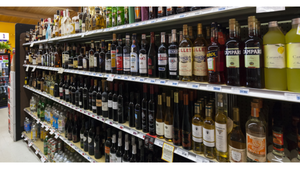FRESHTRACK TO EXAMINE FOOD-SERVICE IMPACT
ORLANDO -- The salad business was once largely food-service territory, doled out one bowl at a time to customers in restaurants, cafeterias and hotels.Now, it's a toss-up. The advent of the packaged salad category and the sophistication of traditional in-store delis have given supermarkets compelling reasons to source huge quantities of salad basics, particularly greens."You can see it in our salad
October 6, 2003
Robert Vosburgh
ORLANDO -- The salad business was once largely food-service territory, doled out one bowl at a time to customers in restaurants, cafeterias and hotels.
Now, it's a toss-up. The advent of the packaged salad category and the sophistication of traditional in-store delis have given supermarkets compelling reasons to source huge quantities of salad basics, particularly greens.
"You can see it in our salad bars, deli departments and our prepared-food departments. Certainly you can see it in produce also," said Mike O'Brien, vice president of produce for Schnuck Markets, St. Louis.
Grower/shippers are keeping apace of the demand, but there is an emerging consensus that supply lines are becoming squeezed, particularly during times of short supply; after all, consumer demand has been growing on all fronts.
The salad situation was just one reason why the Produce Marketing Association asked researchers from Cornell University to examine the food-service industry's use of produce in this year's FreshTrack survey. Bryan Silbermann, PMA president, said the complete study will be released and discussed in depth during the association's annual Fresh Summit convention and expo, Oct. 17 to 21 at the Orange County Convention Center.
"Why food service? When our board looked at all the issues on the horizon that we could research, it became very clear that food service had not been analyzed," Silbermann said. "We had all this benchmark data on the retail channel, but nothing on food service. I was very pleased with the response we got."
Indeed, food service has become a larger player in the minds of traditional retailers as consumers increasingly blur the lines marking where they get their food. As elsewhere, the concept of "convenience" plays big in both industries, and even in the produce category.
"As you can see by walking into any grocery store, we are trying to combat the restaurant industry with convenience," said O'Brien, who is also a member of the PMA's retail committee. "The explosion of our value-added sections is testament to the fact that people want convenience."
Silbermann estimates that some 40% of those attending Fresh Summit have some level of interest in the food-service segment, though those who actually consider themselves primarily food-service operators or distributors are in the single digits.
"But, if you're a terminal market wholesaler in produce, probably as much of your business now is done in restaurants as it is in retail," Silbermann said.
Retailers like O'Brien agree that food service can cause market costs of certain commodities to fluctuate, especially when there is a shortage. The competition carries no animosity, however.
"If people are eating in restaurants they are not buying food from us. But on the other hand, today's restaurant menu is tomorrow's trend in our stores, so we have to co-exist," he said. "We would be interested in any information that would help us serve our customers better."
Another PMA retail committee member, Dave Corsi, is waiting to hear about the latest on country-of-origin labeling, perhaps the top issue on the minds of all produce retailers. The latest round of COOL regulations are pending, and Corsi -- who is vice president of produce for Wegmans Food Markets, Rochester, N.Y. -- will moderate an industry discussion devoted to the controversial topic on Monday, Oct. 20. Schnuck's O'Brien will sit as a retailer on the panel.
"The fire burns for country-of-origin labeling," said Corsi, noting that Robert Keeney, deputy administrator for fruit and vegetable programs at the U.S. Department of Agriculture, will be participating in the workshop as well. "The timing of this discussion will be at its height of interest, knowing the USDA will be releasing the mandatory regulations [any day]."
The COOL seminar is part of a larger series of workshops that the PMA has strived to make more immediate and relevant to today's produce executive. Silbermann said that the retail committee was successful in increasing the "take-home" value of the sessions by making them more practical.
Other regulatory issues to be discussed include the new rules on biosecurity and organic labeling. Merchandising tracks will examine Hispanic shoppers, how to promote health and best practices as they apply to departmental management.
And, there's a new destination this year: PMA will include a floral pavilion and devote part of the educational forum to a category that has increasingly come under the jurisdiction of supermarket produce. Besides a Floral Profit Center on the exhibition floor showcasing both service and self-service floral merchandising, there's a workshop focusing on improving the return on investment of floral sales and marketing.
Wegmans' Corsi, who just assumed full-time management of the retailer's floral operations, said incorporating floral into the show makes sense from a management point of view.
"We have much synergy between produce and floral," he said. "We share the same issues in terms of merchandising, seasonality and inventory management. This list can go on and on, and the floral component is a natural addition to Fresh Summit."
At Schnuck's, O'Brien added that the floral department serves as a very important part of his supermarket company's one-stop-shopping concept. And, while both produce and floral help promote the fresh image retailers seek, there are opportunities to use each department to improve operations in the other.
"The floral department at this point has a very low percentage of scannable product. This has changed in the past few years, and is evolving quickly," he said. "The scan data will help us make better decisions in the future. The floral industry is using the produce industry as a template while trying to standardize. But we never want to lose entirely the creative side of the floral business. That is where we as produce merchants can learn from our floral people."
Fresh Summit will include more than 36 exhibitors in the floral area, according to Silbermann. The entire show floor will include nearly 600 companies from around the world, including 85 first-time exhibitors.
About the Author
You May Also Like




